Developmental Overhauls
Top 10 Most Noteworthy Developmental Overhauls of All Time!
This list takes a look at games that underwent significant changes during the development process. It’s not easy to bring a creative vision to life, and this is especially true in an industry where you have to deal with new technology, executive meddling, and creative differences. Some of the games on this list evolved slowly over time while others saw a radical change in direction. In either case, the end results were significantly different from the original visions. It’s safe to assume that most projects undergo changes while they’re being developed, but the general public is not always privy to the details. The changes made to the games listed here are well-documented, so I thought it would be fun to take a moment and wonder what could have been. It turns out you can change horses midstream.
10
Borderlands
Multiplatform (2009)
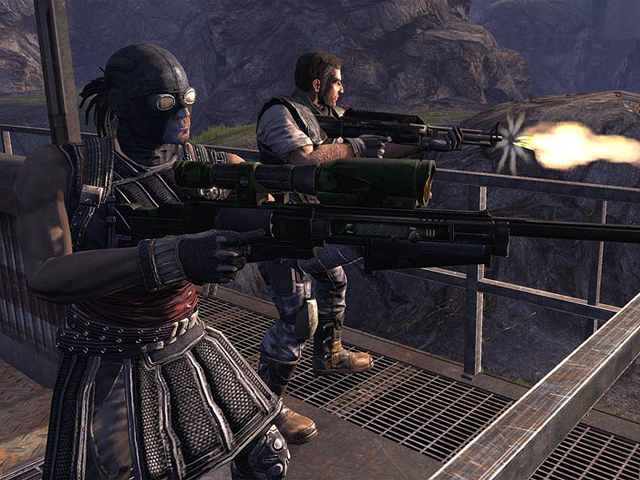
Equal parts RPG and FPS, Borderlands was described as a “role-playing shooter” by Gearbox Software. Upon release, the game was praised for its engaging combat and intriguing looting mechanics, and the co-op gameplay was integrated seamlessly. Everything about the game seemed to mesh so perfectly, so it might be surprising to learn that the distinct cel-shaded visuals were added in the 11th hour. Early builds employed a more realistic art style, and the game featured the same sort of drab visuals that most sci-fi shooters were known for. Borderlands was first shown to the public in 2007 with its original art style still in tact, but it was virtually unrecognizable when it resurfaced two years later. Incidentally, the developers had decided that their original cel-shaded concept art was a better fit for the project. (The game also drew heavy inspiration from a short film called Codehunters, but that’s a topic for another day.) Months of expensive work was scrapped and the original art director was so distraught that she left the industry. In the end, the gamble paid off and Borderlands was given a distinct art style to match its distinct gameplay. The game and its sequels were hugely successful, but some contend that the cel-shaded graphics were actually detrimental to the series. In a 2017 interview with IGN, Gearbox CEO, Randy Pitchford, suggested that the art style put a ceiling on the franchise’s success.
9
StarFox Adventures
Nintendo GameCube (2002)
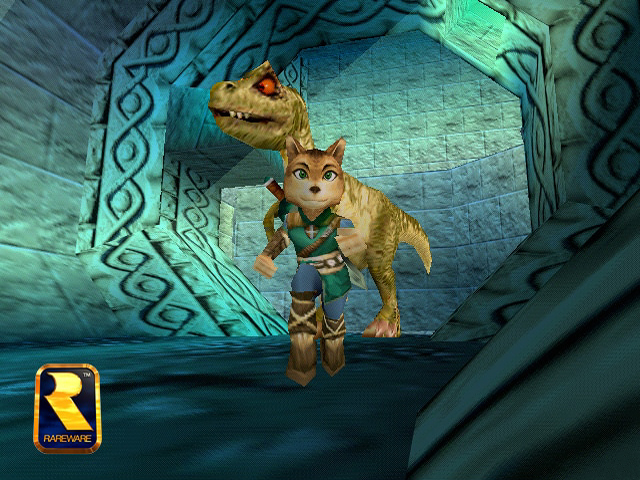
Nintendo and Rare had a healthy relationship dating back to the days of the NES, but things got really serious between them after Rare was contracted to develop Donkey Kong Country. Rare was responsible for many of Nintendo’s biggest titles in the 1990s, and games like GoldenEye 007 and Banjo-Kazooie helped define the Nintendo 64. Their last game on the console was slated to be a vast, open-world adventure that was inspired by Ocarina of Time. Although the initial concept changed many times during the development, Dinosaur Planet was supposed to focus on two interwoven stories. The plot was to center around a canine warrior named Sabre and a foxy deuteragonist named Krystal. When Shigeru Miyamoto saw the game, he noted that Sabre looked a little like Fox McCloud and insisted that the project be rebranded as a StarFox title. This sudden change was disappointing to some members of the team, but they had no choice but to modify the game to fit the StarFox universe. Characters were replaced, the story was re-written, and a few flying sections were tacked on. The decision was also made to release StarFox Adventures on the GameCube rather than the Nintendo 64. Sadly, it was the only Rare game released for the system. Incidentally, the UK-based developer was acquired by Microsoft a day after StarFox Adventures launched in North America.
8
Grand Theft Auto
Multiplatform (1997)
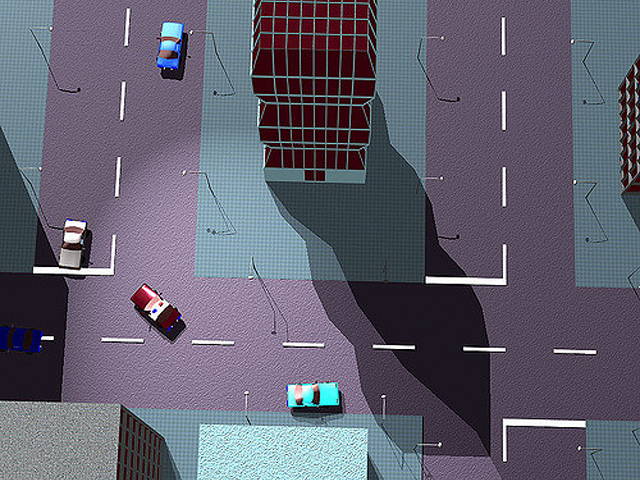
Grand Theft Auto is one of gaming’s most successful franchises, but it began its life as a chaotic mess that could have been cancelled at any point. The first game in the series was constantly evolving during the development phase, and nobody at DMA Design seemed to know what the end product was supposed to look like. Before settling on the Grand Theft Auto concept, the developers were hard at work on a project called Race’n’Chase. The top-down action game had a “cops and robbers” flare and gave players the option of choosing what side of the law they wanted to be on. It became apparent that nobody wanted to play as a cop, so the focus was placed solely on criminal activities instead. The core of the game was still fundamentally broken, however, and the publisher came close to pulling the plug on the project. Ironically, the game was saved by a programming oversight. After a bug caused the police cars to become overly-combative, the development team realized that the game was more fun that way. The aggressive police cars brought an element of tension to the game, and finding the right route after a heist was a lot more dramatic when someone was trying to run you off the road. Grand Theft Auto is not the game DMA Design envisioned when they began, but it’s safe to say it exceeded their expectations.
7
Resident Evil 2
Sony PlayStation (1998)
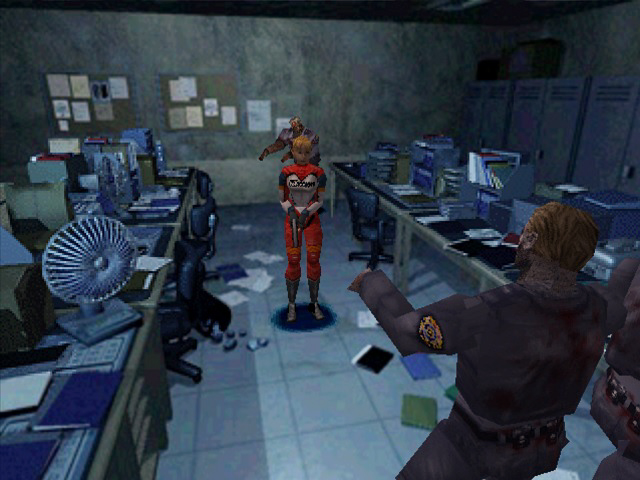
While it wasn’t the first game in the genre, Resident Evil helped popularize survival/horror games. Capcom obviously had a great deal of faith in the series, and development for the sequel started a month after the first game was completed. A build for Resident Evil 2 was shown in July 1996, but it was drastically different from the final product. This iteration of the game centered around a rookie cop named Leon Kennedy and a college student named Elza Walker. Leon’s role was virtually unchanged in the final game, but Elza was erased from existence. Many creative differences arose during the development of the game, and producer Shinji Mikami decided to scrap the game altogether when it was 60-80% complete because he found it to be “dull and boring.” The game’s release date was right around the corner, but the development team decided they’d rather risk the game being cancelled than release a product they were unhappy with. After starting from scratch, a professional screenwriter was brought on board and an entirely new scenario was created. Most of the assets couldn’t be recycled, the environments were altered, and even the characters themselves were retooled. Elza Walker, for example, was replaced with a new character named Claire Redfield to make it easier to connect the plot to the first game. The early build of Resident Evil 2 (now referred to as Resident Evil 1.5) is one of the biggest mulligans in gaming history.
6
Banjo-Kazooie
Nintendo 64 (1998)
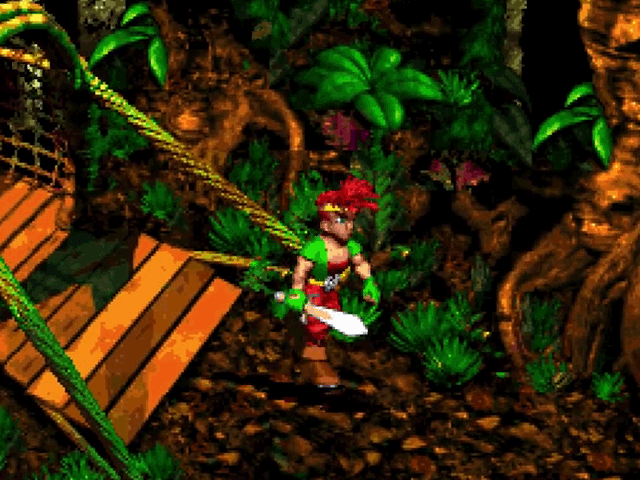
After the release of Donkey Kong Country, Rare began working on Project Dream. The fantasy-themed action game (provisionally named Dream: Land of Giants) used Rare’s ACM graphics technology and was intended to push the SNES to its limits. The game was originally going to star a young boy named Edison who fought groups of pirates with a wooden sword. There were concerns that Edison was too generic, however, so his rabbit friend Timmy replaced him as the main character. Banjo the bear was intended to be a mere side character, but he somehow ended up in the limelight. Project Dream was deemed too ambitious for the SNES, so development was moved to the Nintendo 64. Rare considered turning the project into a vast, 3D RPG, but they ended up making a delightful 3D platformer along the lines of Super Mario 64 instead. Banjo-Kazooie retained some the fairy tale themes of Project Dream, but the final product was nothing like the original concept. Some of the characters from Project Dream were featured in the Banjo games, however. Captain Blackeye was supposed to be the main villain in Project Dream, but he had to settle for a cameo in Banjo-Tooie. The pirate captain even made references to his past dreams, and noted that Banjo looked like a bear that stole his glory.
5
Donkey Kong
Arcade (1981)
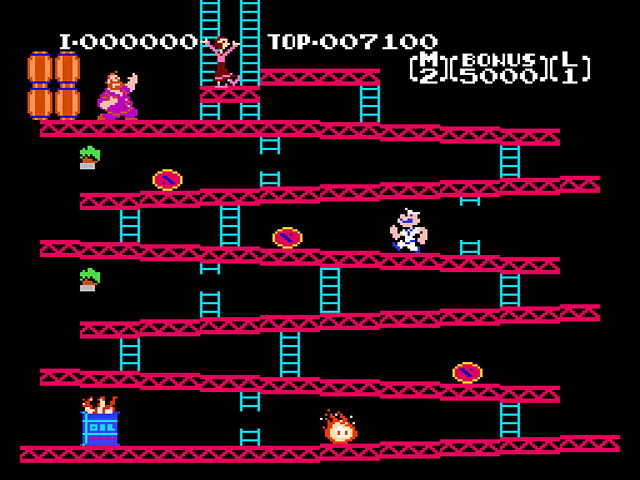
Donkey Kong is one of the most important video games of all time. It launched Shigeru Miyamoto’s career, it helped propel Nintendo to the forefront of the industry, and it opened the doors to new genres by popularizing the concept of a “jump” button. Donkey Kong is one of the first examples of a complete narrative told in video game form, and the game accentuated the importance of characters. Mario is undoubtedly the most iconic video game hero ever devised, and Donkey Kong is arguably the most recognizable villain. The only reason these characters were created in the first place is because Nintendo was unable to secure the license to make a game based on Popeye. Their initial plan could not be realized, so Nintendo introduced Mario, Donkey Kong, and the damsel Pauline to replace Popeye, Bluto, and Olive Oyl respectively. These changes were perhaps not as drastic as some of the other examples on this list, but they were arguably the most impactful of all. Needless to say, it worked out well for them in the end. Nintendo is the house that Mario built. As an aside, the same company that refused Nintendo’s initial request for the Popeye license had also refused to license Flash Gordon to an aspiring director named George Lucas. Neither Star Wars nor Mario would have existed if King Features Syndicate had more foresight. I owe 80% of my childhood to their stubbornness.
4
Resident Evil 4
Nintendo GameCube (2005)
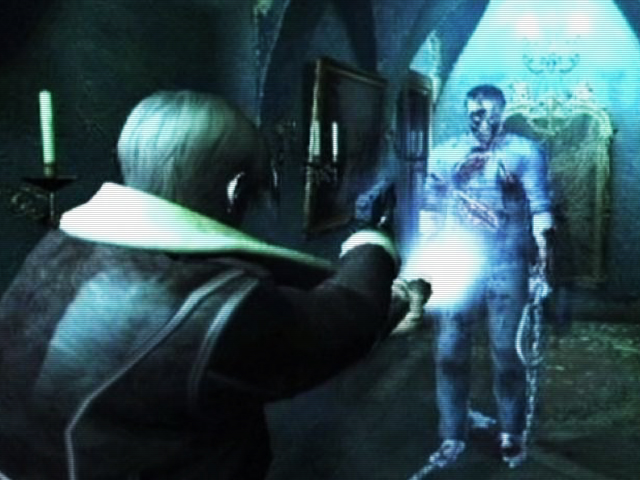
Several proposed versions of Resident Evil 4 were scrapped during its lengthy development process. The first iteration was slated for release on the PlayStation 2 and was described as a stylish action game with a supernatural protagonist. The game used a dynamic camera system in lieu of the static camera angles the series was known for, but producer Shinji Mikami felt that the game strayed too far from the series’ survival horror roots. This project eventually took on a life of its own and evolved into Devil May Cry. Work on Resident Evil 4 resumed, and the game was apparently 40% finished when Capcom announced it as a GameCube exclusive in November, 2002. By the 2003 E3, however, another revision had surfaced which put an emphasis on paranormal enemies and supernatural themes. With costs spiraling out of control, Capcom went back to the drawing board once more and began developing a more traditional Resident Evil game. Predictably, this version was deemed too formulaic and Shinji Mikami eventually stepped in to take over the directorial duties. The team had grown tired of the classic formula by this point, so they decided to shift to an entirely new gameplay system. Resident Evil 4 retained many survival horror themes, but it was more action-based than its predecessors. Everything from the camera to the combat to the inventory management was completely overhauled, and the game was rightfully branded as a masterpiece when it was finally released. What a roller coaster ride.
3
Conker’s Bad Fur Day
Nintendo 64 (2001)
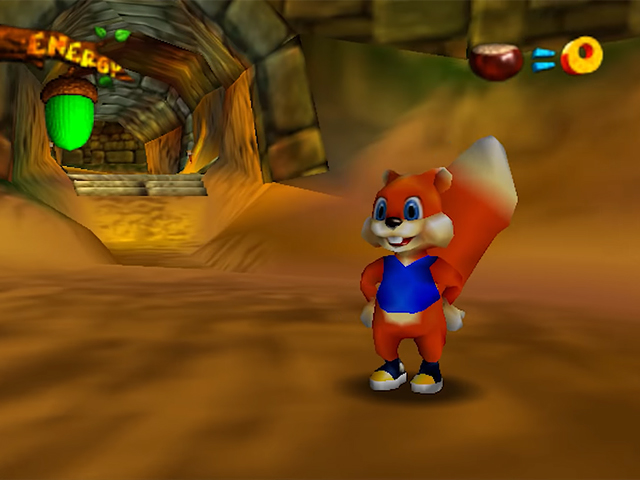
Rare had a reputation for developing games that were appropriate for all ages, and Conker’s Quest looked like it was cut from the same cloth as their other titles when it was announced in 1997. The game’s title was changed to Twelve Tales: Conker 64 the following year, but the game was still aimed at younger audiences. Other Rare titles like Banjo-Kazooie and Donkey Kong 64 were released while Conker was being developed, and the game was delayed on several occasions. The developers began to worry that their game was too similar to other games in the genre, so they decided to differentiate themselves from the competition by targeting mature audiences. Conker’s Bad Fur Day looked like a typical, colorful 3D platformer on the surface, but it abandoned some of its childish themes in favor of graphic violence, profanity, and scatological humor. There weren’t an abundance of M-rated platforming games on the Nintendo 64, so any game that was loaded with vulgar language and sexual themes was bound to stand out. Conker had already appeared in Diddy Kong Racing and was featured in his own family-friendly Game Boy Color game, so his M-rated makeover caught everyone off guard.
2
GoldenEye 007
Nintendo 64 (1997)
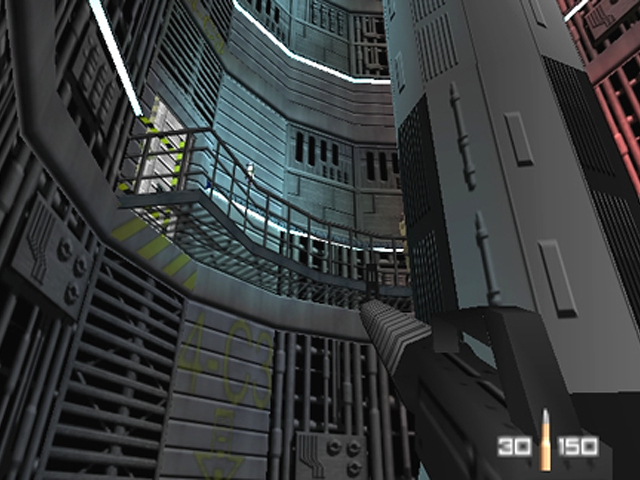
With the possible exception of Halo, no first-person shooter did more to popularize the genre on consoles than GoldenEye 007. The game was showered with accolades and stayed on the sales charts for years after its release. The game helped revolutionize first-person shooters, but it was conceived as something else entirely. During the earliest stages of development, Rare considered making a Bond-based side-scrolling platformer for the Super Nintendo. This made sense, given the success of Donkey Kong Country, but they decided the Bond license would be better suited for a 3D shooting game for Nintendo’s upcoming “Ultra 64” console. During the first few months of development, the team intended on making an on-rails shooter in the vein of Sega’s Virtua Cop. The team was inexperienced – eight of its ten developers had never even worked on a game before – and GoldenEye 007 had an unusually long development cycle as a result. On the flip side, the developers were afforded the opportunity to experiment with new ideas. The Virtua Cop influence can still be seen in the aiming system, but the game’s free-roaming levels were inspired by Super Mario 64, the stealth elements were introduced to help the game stand out from other shooters, and the game’s iconic multiplayer mode was a complete afterthought that was added mere weeks before the deadline. It’s truly remarkable that all the pieces fell together so perfectly.
1
Halo: Combat Evolved
Microsoft Xbox (2001)

When Halo was announced by Steve Jobs at the 1999 MacWorld Conference, the game was slated to have real-time strategy elements and could be described as a sci-fi follow-up to Bungie’s Myth. When the first trailer was shown at the 2000 E3, the game had evolved into a third-person shooter with RTS elements. Microsoft acquired Bungie the following month, and Halo was announced as an exclusive for their upcoming Xbox console. The game’s engine was completely overhauled at this point, and Halo became the revolutionary first-person shooter that we all know and love. Bungie concentrated primarily on Macintosh games during their early years, so some Apple fans felt betrayed when they were bought by Microsoft. Nevertheless, the new partnership was a smashing success. Halo broke sales records, picked up numerous Game of the Year awards, and helped establish the Xbox brand as we know it. It was one of the most important launch games ever, and it shaped the entire gaming industry. The Combat Evolved subtitle was added to help the game stand out from other military-themed shooters, but it was an appropriate way to describe the game’s development cycle.

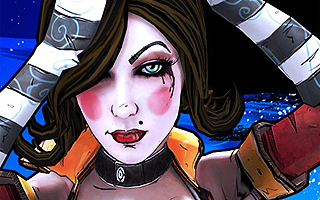
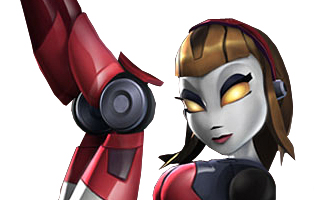
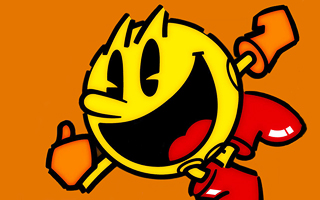
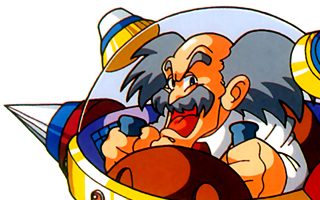
Do you agree with this list? Let us know what you think by leaving a comment below. Your opinion matters!